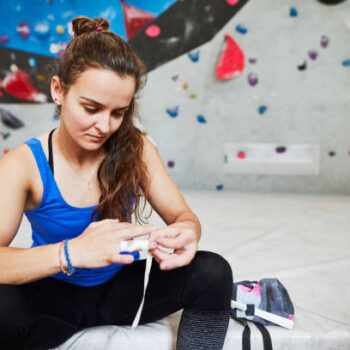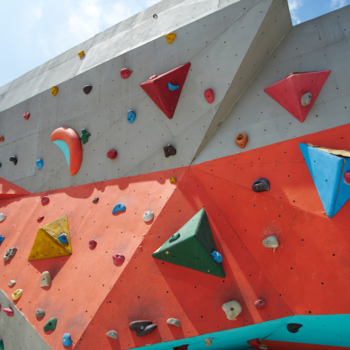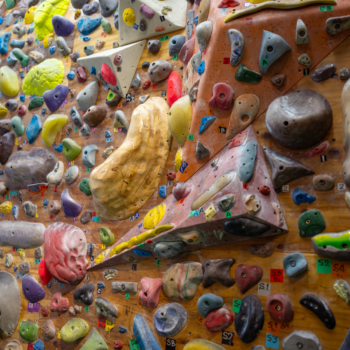Crimp Holds: How to Master Bouldering Holds
What are crimps?
Crimp holds are small, sharp holds that require a lot of finger strength to grip onto. They are characterized by their narrow width and typically have a small edge or lip that climbers can grasp with their fingertips. Crimp holds require strong finger strength and precise technique. Armed with the knowledge of how to hold crimps, practice, and finger-strength exercises, you’ll be using crimps in no time.
Important Tip: Crimp holds primarily engage the fingertips, so proper finger placement is crucial. Aim to position your fingers on the hold so that the weight is distributed through the pads of your fingers and not the tips.
Crimp holds are divided into three different types: full crimp, half crimp, and open hand.

Full Crimp (Image #3)
In a full crimp, place your fingers on the hold with your finger’s middle joint bent at approximately 90 degrees. Then wrap your thumb over your index finger, creating a closed grip. This grip maximizes strength but puts significant stress on your finger tendons and joints. Tip: Use the full crimp sparingly. It can easily cause finger injuries, especially when overused.
Half Crimp (Image #2)
The half crimp is a more sustainable grip. The hand placement is the same as a full crimp. The main difference is that your thumb is not wrapped over your index finger but instead, remains extended. This grip offers good power while reducing the strain on your fingers. Unlike full crimp, you can use this gripping technique regularly.
Open Hand (Image #1)
Open hand looks like what the name describes. Your fingers are extended with a slight bend at the first joint (near the fingertip) and the thumb remains extended. This grip is less powerful than the other crimps, but places the least strain on your fingers, making it useful for longer or endurance climbs.
Finger Strength Training
Crimping requires strong fingers. As most climbers will suggest, the best way to improve finger strength is through climbing. If you practice climbing, the strength in your fingers will increase by simply exercising the muscles of the hand and forearm.
Besides climbing, you can also do regular finger-training exercises which can help improve your grip strength. Fingerboards, campus boards, hangboards, and finger-strengthening exercises such as finger curls and dead hangs are useful for building finger strength and endurance. Caution: As with using crimp holds, even overdoing it on hangboards and finger-strengthening exercises can result in a strained tendon. Finger strength improves with practice and time, so don’t strain yourself.
Strained your finger? Check out The Climbing Doctor to find out how to check the root cause of the problem and get some tips on how to recover.
Especially for beginners, crimps can be very straining on your fingers. Straining your fingers can result in injuries like pulley strain and tendonitis. Fortunately for beginners, you will not encounter very many crimps at low grades and should mainly focus on improving your grip technique rather than finger strength.
Climbing crimps is difficult, but an important skill to master. Remember to practice proper warm-ups, stretching, and resting between climbs to prevent injuries, particularly to your fingers. Gradually build up your finger strength. And most importantly, enjoy climbing.
What are the different kinds of bouldering holds?
Crimp holds are just some of the variety of bouldering holds available for climbers to use to reach new heights. Want to learn more about the various bouldering holds, check out our comprehensive guide on How to Master Bouldering Holds. Interested in learning more about bouldering in general? You can read our definitive guide on bouldering for beginners here.




